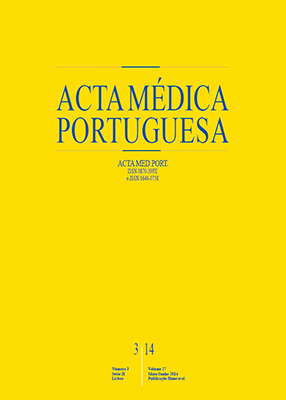Secondary Progression is Not the Only Explanation
DOI:
https://doi.org/10.20344/amp.4322Abstract
Multiple sclerosis is an inflammatory demyelinating disorder of the central nervous system. Its presentation is variable and its course and prognosis are unpredictable. Approximately 85% of individuals present a relapsing-remitting form of the disease, but some patients may evolve into a progressive course, accumulating irreversible neurological disability, defining its secondary progressive phase. Despite all the advances that had been reached in terms of diagnosis, many decisions are still taken based only on pure clinical skills. We present the case of a patient that, after being diagnosed with a clinically isolated syndrome many years ago, seemed to be entering in a secondary progressive course, developing a clinical picture dominated by a progressive gait disturbance. Nevertheless, multiple sclerosis heterogeneity asks for some clinical expertise, in order to exclude all other possible causes for patients’ complaints. Here we present an important red flag in the differential diagnosis of secondary progressive multiple sclerosis.
Keywords: Magnetic Resonance Imaging; Multiple Sclerosis, Chronic Progressive; Meningioma.
Downloads
Downloads
Published
How to Cite
Issue
Section
License
All the articles published in the AMP are open access and comply with the requirements of funding agencies or academic institutions. The AMP is governed by the terms of the Creative Commons ‘Attribution – Non-Commercial Use - (CC-BY-NC)’ license, regarding the use by third parties.
It is the author’s responsibility to obtain approval for the reproduction of figures, tables, etc. from other publications.
Upon acceptance of an article for publication, the authors will be asked to complete the ICMJE “Copyright Liability and Copyright Sharing Statement “(http://www.actamedicaportuguesa.com/info/AMP-NormasPublicacao.pdf) and the “Declaration of Potential Conflicts of Interest” (http:// www.icmje.org/conflicts-of-interest). An e-mail will be sent to the corresponding author to acknowledge receipt of the manuscript.
After publication, the authors are authorised to make their articles available in repositories of their institutions of origin, as long as they always mention where they were published and according to the Creative Commons license.









